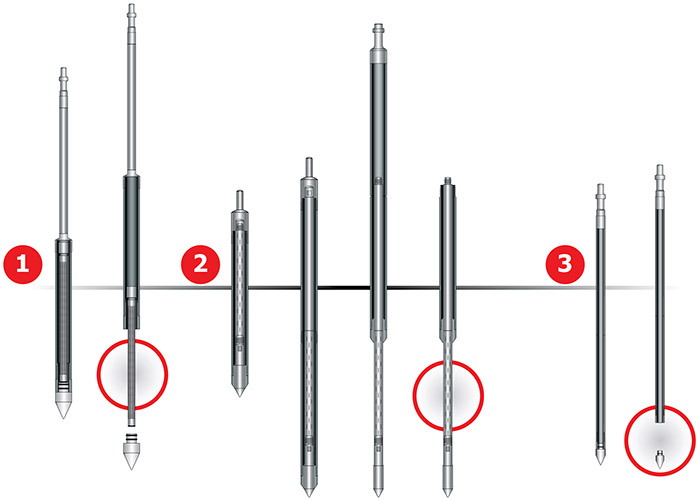Home » Environmental Monitoring & Sampling » Discrete groundwater sampling
Environmental Monitoring & Sampling
Direct-Push has re-defined how contaminated sites are assessed
We are experts at executing environmental sampling programs at complex sites. CDS has a broad base of experience, at hundreds of sites across western Canada, using direct-push tools, techniques and equipment.
Discrete groundwater sampling tools are most often used for initial site investigations because they can
rapidly collect a large number of groundwater samples at different locations across a site.
Key features include:

The retractable groundwater sampler allows placement of a screen up to 4’ long in the saturated soils. The mesh screen has an ID of 1/2”. The retractable groundwater sampler can be pushed single tube without pre boring.
For hard lithology, a heavy duty retractable groundwater sampling is pushed dual tube into the groundwater and sampled in the manner shown above. The heavy duty retractable screen point sampler uses a slotted 1 1/4” direct push extension as the screen (ID 0.5” with 0.010”/.020” slots).
The expendable tip groundwater sampler is a single tube sampler for use at a specifi c depth, and especially useful for sinking contaminants. Push the direct push extension to the desired sampling depth below the groundwater table. Retract the direct push extension. At this point, sample in the same manner as above.